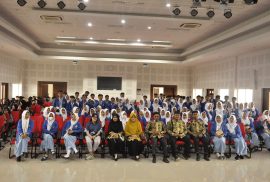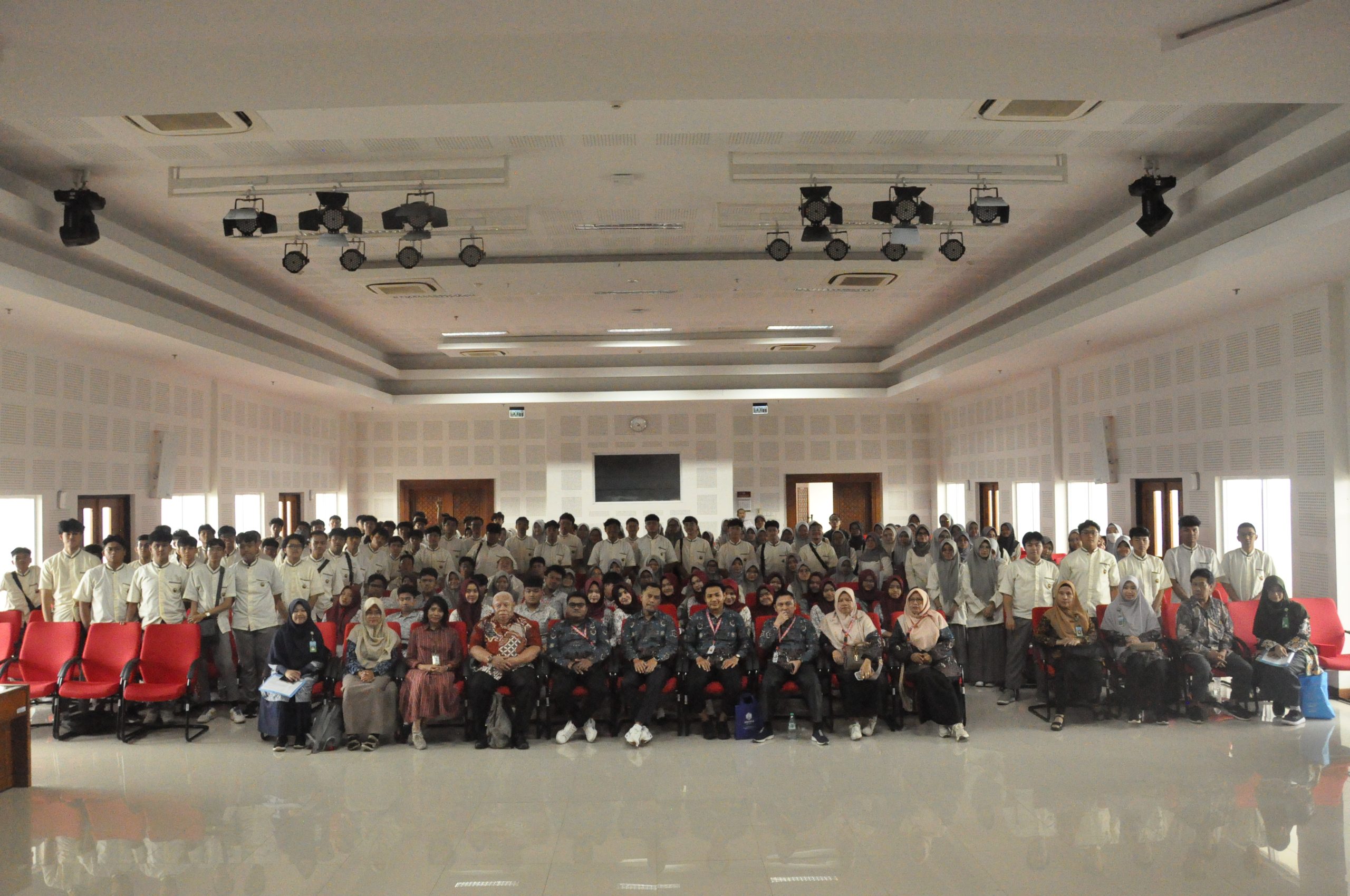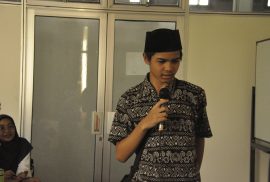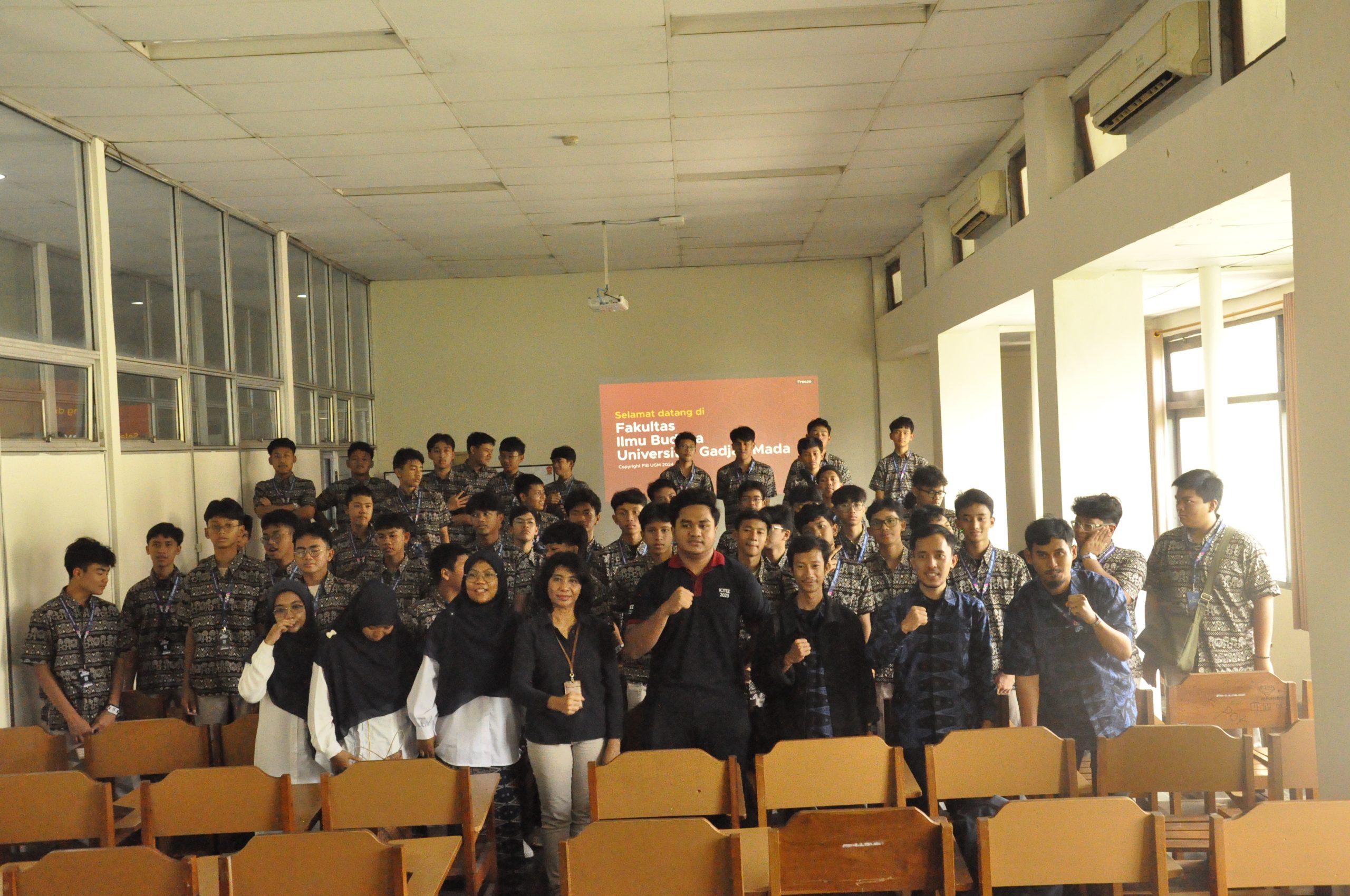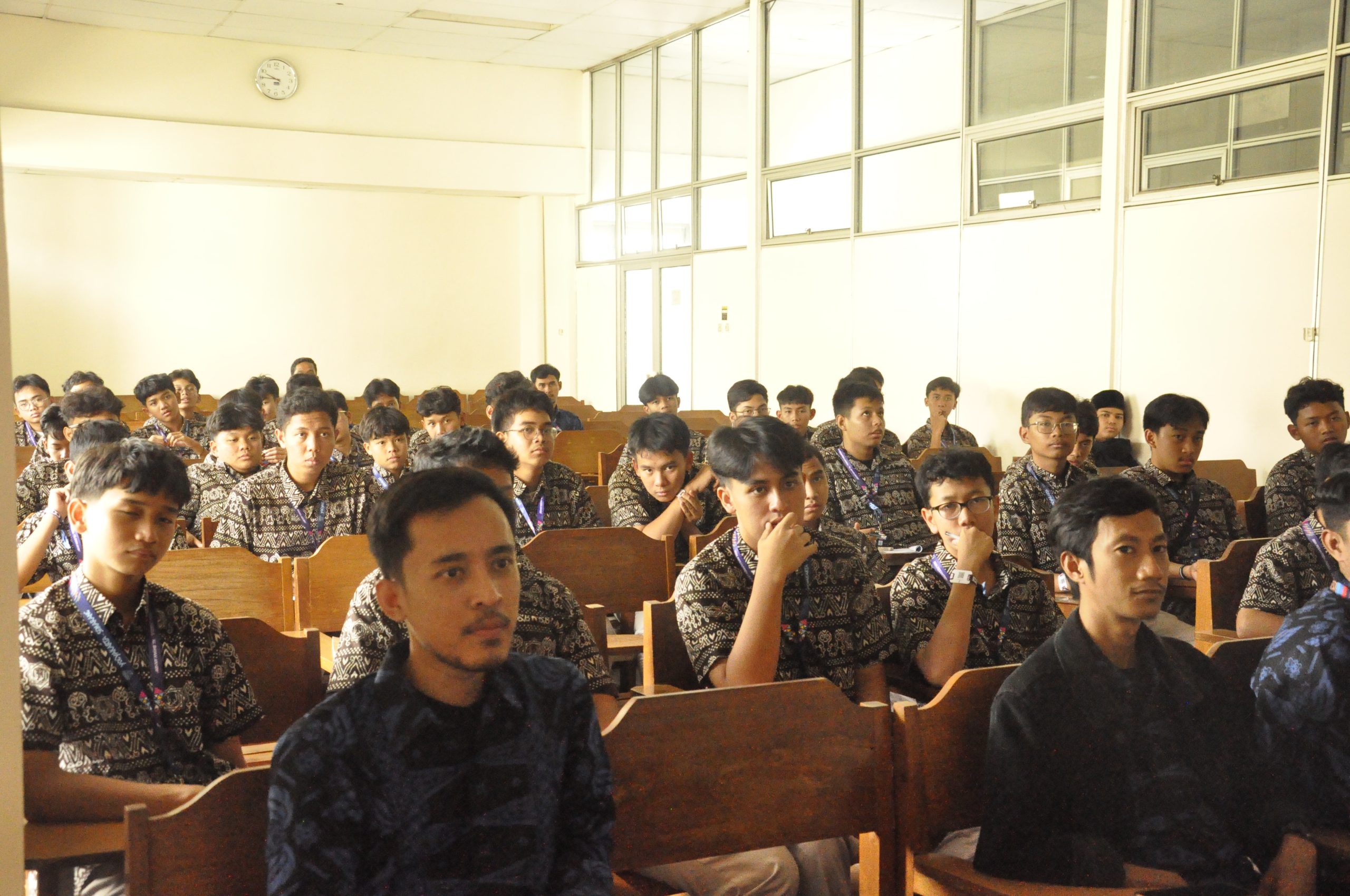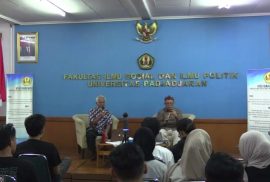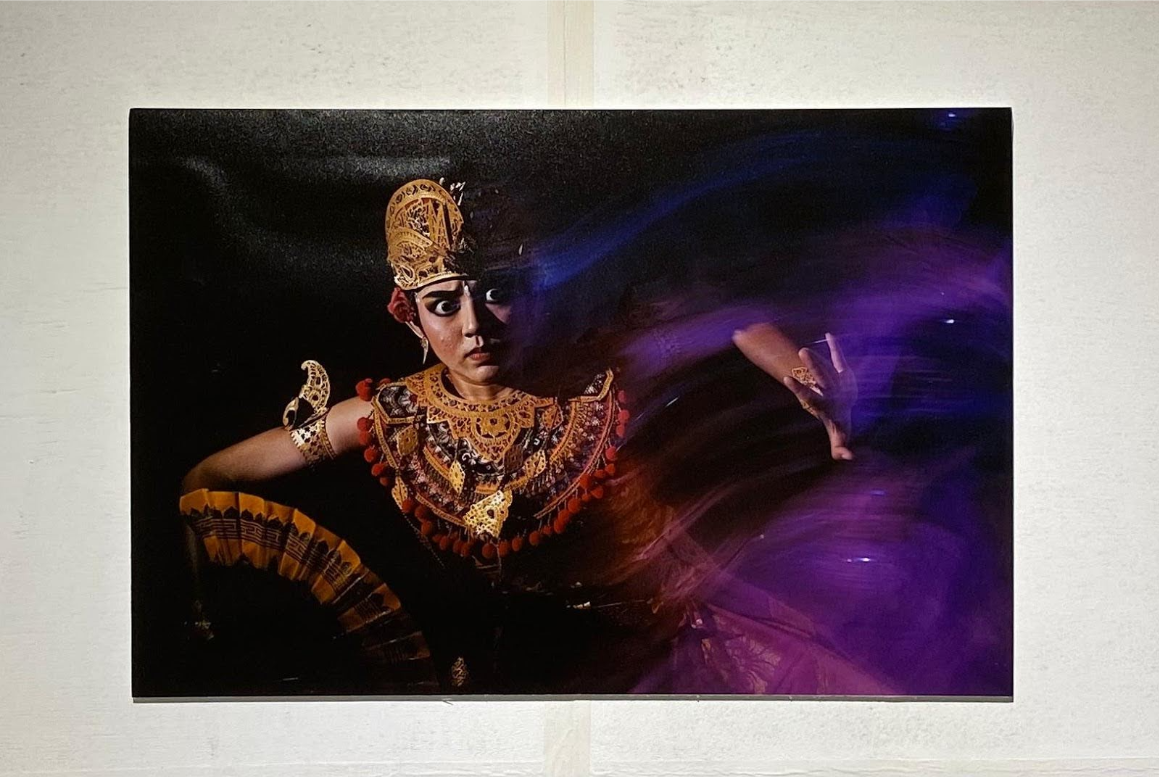On Tuesday, December 17, 2024, SMAS Muhammadiyah 2 Genteng held an academic visit to the Faculty of Cultural Sciences, Gadjah Mada University (FIB UGM). Located in the Soegondo Building Auditorium, the activity which took place at 09.00-11.00 WIB was attended by 116 students and accompanying teachers.
Warmly welcomed by the staff of the Public Relations & Cooperation Unit and representatives of FIB UGM students, this visit began with remarks from the school to convey the purpose and objectives of the visit. The event continued with a video screening about UGM and FIB UGM, followed by a quiz with interesting prizes to create an interactive atmosphere.
The material presentation from FIB UGM provided information about the learning system, the minimum value of Achievement-Based Entrance Selection (SMBP) and Computer-Based Writing Test (UTBK), and facilities that can be accessed by students. The discussion session became a moment full of enthusiasm, with discussions about SMBP success tips, campus facilities, and special quotas for certain study programs.
In closing, SMAS Muhammadiyah 2 Genteng handed over souvenirs to FIB UGM, followed by a group photo session that captured this precious moment. This activity is expected to be an inspiration for students in preparing their steps towards higher education.

